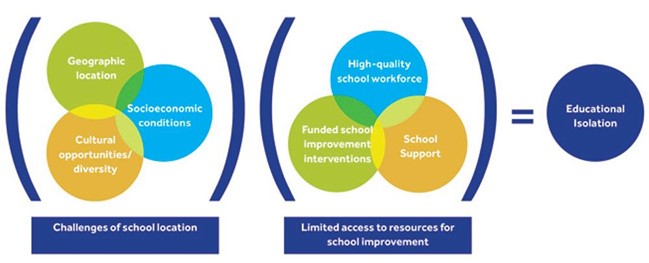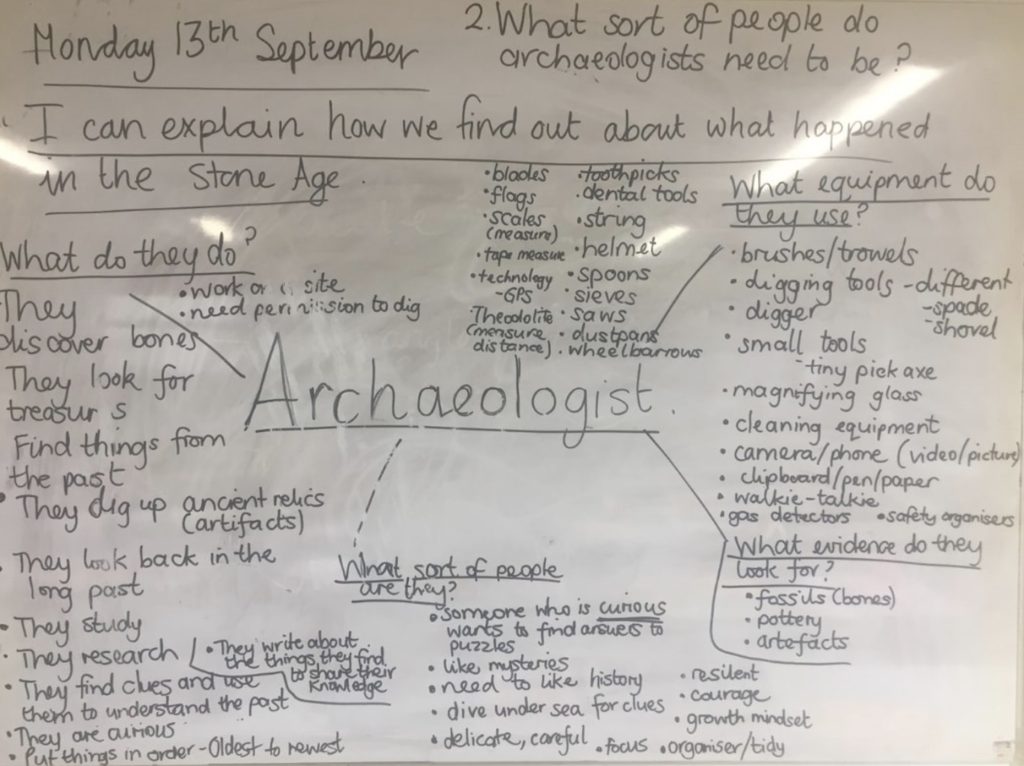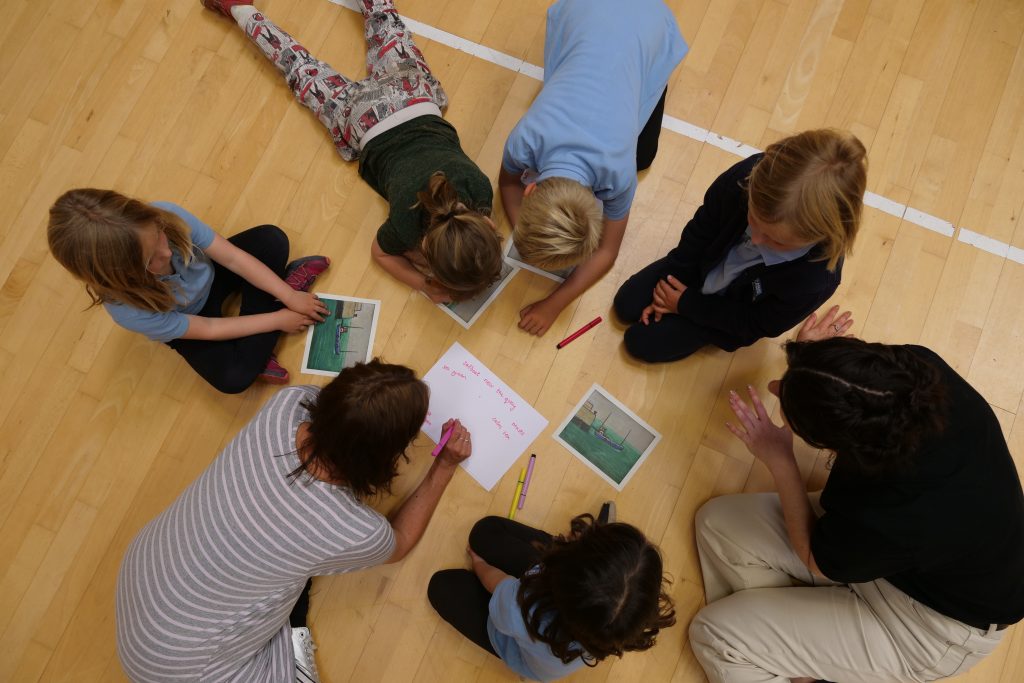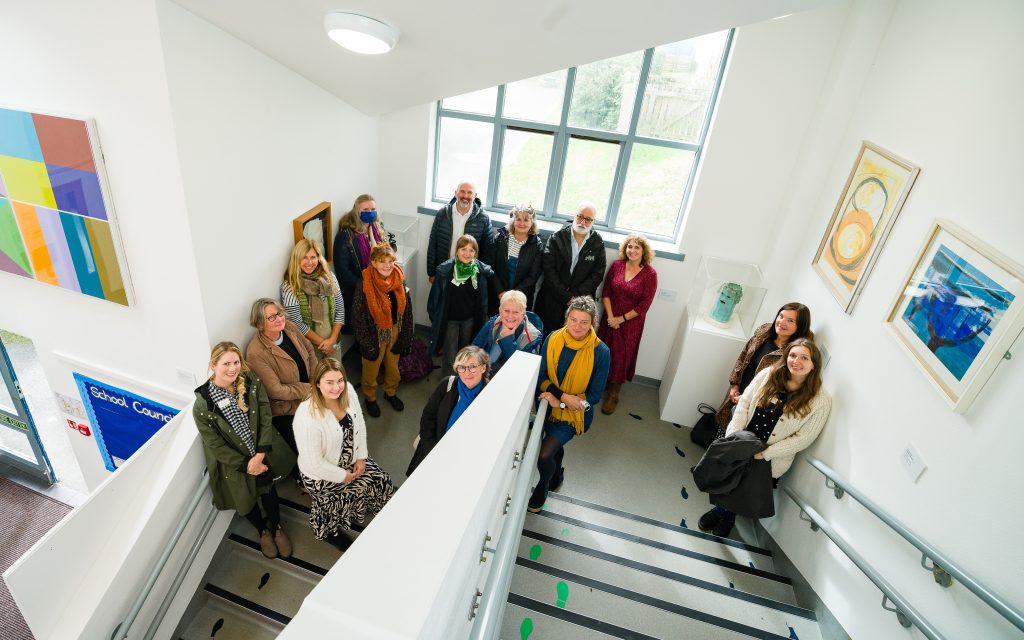The power of arts-based CPDL for ‘educationally isolated’ schools
Professor Tanya Ovenden-Hope, Provost and Professor of Education at Plymouth Marjon University and Advisory Board Member for our Teacher Development Fund (TDF), shares some of her research into ‘educationally isolated’ schools and explores the impact of TDF within such settings.
Understanding the rural, coastal and small school context of primary schools in the UK
In the UK 10.67 million people lived in rural areas (Clark, 2022) in 2021. These figures include coastal areas, with 5.3 million identified as living in coastal towns (ONS, 2020). Just over 16% of the UK population as a whole. School-aged children (5 – 18 years of age) were estimated at 16% of the rural-coastal population in 2019 (DEFRA, 2020). There are significant concerns about poverty and social exclusion in rural and coastal areas, with the additional inequity in the educational outcomes for persistently disadvantaged pupils:
“Notably, in rural areas, the relationship between poverty and educational outcomes is particularly strong. So although pupils in rural schools with low deprivation attain highly, schools in deprived areas are really struggling.”(CfEY, 2019 para 10-15)
“Young people in seaside towns are being let down and left behind by poor standards in existing provision, limited access to educational institutions and a lack of employment opportunities, resulting in low levels of aspiration.” (HoL, 2019: 5)
The socio-economic context of rural and coastal areas in England is challenging; limited and declining employment opportunities and ageing populations have impacted on the infrastructures of these communities, negatively affecting housing, transport, technology and leisure (HoL, 2019). These infrastructural challenges, as well as socio-economic issues, affect schools in coastal and rural communities and result in more limited access to resources than schools in urban areas (Ovenden-Hope and Passy, 2015; 2019). My research partner, Dr Rowena Passy, and I have called schools that experience place-based challenges ‘educationally isolated’.
Educational isolation
Educational isolation in its broadest sense is defined as ‘a school experiencing limited access to resources for school improvement, resulting from challenges of school location’ (Ovenden-Hope & Passy, 2019: 4). To add to the conceptualisation of educational isolation, we identified three key locational/place-based challenges: geographic remoteness, socio-economic deprivation, and cultural isolation (from opportunity and diversity). Schools experiencing all three of these place-based challenges were found to have more limited access to a high-quality school workforce, funded school improvement interventions and school support and high-quality professional development than schools that were in urban, affluent or culturally diverse or accessible areas (Ovenden-Hope & Passy, 2019). The importance of geographic location/place, socio-economic conditions and cultural opportunities/diversity for schools is shown graphically in Figure 1.

Educationally isolated schools by virtue of their place are typically located in coastal and rural areas but can include ex-industrial areas in the UK. Small schools are typically located in these places and experience educational isolation. School improvement requires a sustained and high-quality workforce, with opportunities to apply for additional funding to engage with school-to-school support and professional development and learning, which is limited for coastal, rural and small schools by their educational isolation.
The Teacher Development Fund and Educationally Isolated Small Schools
Paul Hamlyn Foundation’s Teacher Development Fund (TDF) has been proactive in reaching out to educationally isolated primary schools. Recognising the challenges around capacity coastal, rural and small schools may have in submitting an application, PHF has encouraged educationally isolated schools to form partnerships to support the application process. TDF Advisory Board Members have been encouraged to promote applications to the Fund to schools in places that have not applied before, particularly in areas that are educationally isolated across the UK. The outcome has been the award of TDF grants to a number of projects serving educationally isolated schools, with the impact of developing communities of sustainable expert creative arts teaching in schools that have been deprived of but deserve targeted resources.
Educationally Isolated Small School’s Experience of the TDF
Morda Church of England Primary School
Morda Church of England Primary is a small school of 117 pupils just south of Oswestry in North West Shropshire, near the Welsh border. It is educationally isolated with a diverse school community. The school is rooted in the heart of its village community and its history of mills, mining and farming. Morda was awarded TDF funding in 2018-19 to work with seven other schools in England and Wales on the project ‘Transforming primary teaching through dramatic inquiry’.
The Co-Headteacher of Morda, Helen Chapman, is the TDF Project Lead and has sustained engagement across the schools in an extended project (due to disruption caused by the pandemic) to establish a vibrant community of practice across the schools for teaching through drama. Drama, inquiry for learning and expert framing are used to create imaginary contexts for cross-curricular learning. In particular, the project has explored the Mantle of the Expert pedagogical approach developed by Dorothy Heathcote.

I discussed the experience of leading the grant and its impact for educationally isolated schools with Helen Chapman. Helen had been participating in a leadership coaching programme for women, which gave her the time and impetus to apply for the TDF with two other lead practitioners. The other smaller schools were noted as being interested, but lacking the resource – staff and time – to commit to writing the document.
The pandemic changed Morda’s two-year project into four years, which was a much longer period of time than the schools had signed up for. Longitudinal projects are always challenging to lead, due to changes that occur naturally over time. This project experienced school leadership changes and changes to education systems. Helen recognised that the smaller schools involved in the project had to prioritise getting subjects and subject leads ‘up to standard’ [for the then new Ofsted inspection framework], which reduced their capacity to engage with and in some cases continue, the project.
Covid also impacted the project by creating a big gap between the training (which was considered high-quality and well-received by all the teachers) and classroom practice. Helen did her best to keep development going following the training but felt that this was as effective as it could be due to the illness of teachers and trainers. This said the benefits to the schools that have ‘stayed due to their passion for the project’ have been clear. Twelve teachers all received a quality mark for ‘Mantle of Expert’ and are keen to sustain the training across their schools. The benefit of being a small school in the project was that the training could be disseminated into practice with all staff to become part of whole school practice. All staff in all the small schools now use the techniques developed by the project and share experiences through this expert community of creative arts practice.
“The personal relationships that have been formed between those teachers – it’s a really tight little group. It’s a community now and those teachers talk to each other.”
Helen Chapman, Co-Headteacher, Morda Church of England Primary School
The children in the small educationally isolated schools of the project, particularly those with low levels of literacy, have experienced a huge boost to their confidence. The children have learned to step into others’ shoes through the high-quality of drama teaching that the project has supported. Helen explained that the teaching of drama would never have been as good as it is now if it had not been for the TDF. The teachers have experienced real, high-quality drama from world-leading experts and been trained in how to teach it. The schools in this project are not close to centres of drama excellence, and therefore would not have been able to afford the time or resources to engage in training at a distance. It is clear that the children are benefitting from the very high-quality drama teaching, retaining curriculum knowledge through the experience and narrative of doing drama.
“Rigorous training [through the TDF project] has transformed teaching in our schools.”
Helen Chapman, Co-Headteacher, Morda Church of England Primary School
Newlyn Primary School
Newlyn Primary is a small school of 120 pupils in a small fishing village just over a mile from Penzance on the south coast of Cornwall. It is an educationally isolated school situated in a place of socioeconomic deprivation, geographical remoteness and cultural isolation. It is the lead school (of nine schools) in the Newlyn Art Gallery Schools Partnership project ‘Think, talk, make art’. Funded from 2020/21 the project has supported the creation of an in-school gallery at each location, with artworks being borrowed from the Arts Council Collection and Cornwall Council Schools Art Collection. In order to support the school-based curation of the galleries and the children’s engagement with the art, teachers and school leaders engaged with professional development and learning led by artist-educators.
The Project Lead for the schools is Isabel Stephens, Headteacher at Newlyn Primary School. The aim of the project for her has been for teachers to be able to harness the full potential of art across the curriculum and to raise the aspirations of every child through their engagement with, and inspiration from, art. The project has had to cope with restrictions to training and face-to-face collaboration caused by the pandemic but has enabled the development of expert Art teaching to inspire the pupils in each school.
I discussed the TDF project with Isabel and Becca Rolason, the Newlyn Primary School Subject Lead for Art. While the TDF grant application was demanding due to time and capacity issues, the potential benefits to the small schools in being part of the project made the additional work worthwhile. Isabel had piloted art development in her school, using the closely located Newlyn Art Gallery to inspire and engage pupils. Having a funded project with the gallery that could extend and enhance what Newlyn Primary was trying to do, and reach other schools with similar challenges in accessing high-quality art professional development for teachers, was a huge incentive to complete the application.
Becca started the professional development and learning for the project by working with Newlyn Art Gallery and developed her practice by engaging with professional artists to understand how to create sketchbooks and observing how artists work with children to teach art. The artist workshops in school demonstrated such great benefit to the children, e.g how to use colours to articulate emotions in their sketchbooks and develop vocabulary, that all teachers wanted to learn to teach using art in that way.

The majority of children at Newlyn Primary School, and other schools in the project, would not typically be ‘exposed to’ gallery-based art. Isabel shared how the curated art at the school was hung in the high-ceilinged stairwell and created a gallery environment that the children passed several times a day.
“The very first time that we had the artwork in the school, the children were saying things like ‘we cannot believe that children from Newlyn would be allowed something like this’. So there was a really noticeable impact on their aspiration and their self-belief. Which is why it was such a powerful project.”
Isabel Stephens, Newlyn Primary School Project Lead
The children are now used to having art in school and have an expectation that it will continue to be accessible to them. Isabel has seen the confidence of the children grow with and around art, and the language they use to describe the art has expanded. She even reports that this confidence has changed family engagement with art, with parents taking their children to art galleries at the request of their children:
“These are not people who would normally have done something like that, but because the children were talking about it [art gallery trip]… they did that as a weekend trip. You know it’s wonderful. And it’s wonderful that they’ve got the confidence. That’s my dream, that they will just walk into Newlyn art gallery with confidence.”
Isabel Stephens, Newlyn Primary School Project Lead
The determination of Isabel as a small school Headteacher to win a TDF grant has paid off. The pupils have been identified as having raised aspirations as a consequence of being able to see and engage with famous art in their schools. Teachers in the small schools have embedded art across the curriculum as a result of the training received and shared by Art Leads for the project. This ability to create a focus for the whole school culture is clearly achievable for small schools and has been developed very effectively by the Headteacher in Newlyn Primary School in relation to art. The whole school teaching community has been supported to become an expert community of art practice.

Educationally isolated small schools have place-based challenges that limit their access to resources, including the resources to support applications for grants like the TDF. The Paul Hamlyn Foundation encourages educationally isolated schools to work in collaboration with arts organisations and other schools to support applications for the TDF. It is clear that engaging with a TDF project can be transformational for the whole educationally isolated small school community.
“The project has been quite transformational… the art has been a real driver for us in transforming the school.”
Isabel Stephens, Newlyn Primary School Project Lead